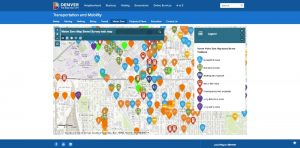The Texas state senate is considering a bill that would fund a high school program that would allow technology companies to partner with schools to teach students relevant technical skills.
While many counties and cities are adopting mobile apps to connect with residents, websites still remain the most popular form of digital communication. For the third consecutive year, nine out of 10 local government respondents in a recent survey describe their websites as “integral to their overall communications and public service strategy.” Vision, a government-focused […]
The Consumer Technology Association released the 2017 Innovation Scorecard, ranking states in four categories: Innovative Champion, Innovative Leader, Innovative Adopter, and Modest Innovator.
The American Telemedicine Association released its 2017 Telemedicine Executive Leadership Survey results, finding that more than 83 percent of executives say they are likely to invest in telehealth this year.
Axon launched a new law enforcement initiative this month. The provider of connected law enforcement technologies will equip every police officer in the United States with a body camera–for free. Axon will also provide supporting hardware, software, data storage, training, and support to police departments free of cost for one year.
The Department of Health and Human Services should re-assess the effectiveness of its efforts to increase patient access to electronic health records, according to a recently released Government Accountability Office report.
The states of Georgia, Illinois, Tennessee, Massachusetts, and Maryland have all discussed bills that restrict automated vehicle testing to motor vehicle manufacturers, which puts technology companies like Uber and Waymo at a disadvantage.
The Future of Privacy Forum said institutions must be established to govern the handling of individuals’ data in the era of smart cities.
Denver’s crowdsourced data platform asking people to indicate traffic hazards has garnered more than 2,200 responses since its March 6 launch. Sixty-one people were killed in traffic-related deaths on the streets of Denver in 2016. To redress the issue, Denver is participating in Vision Zero, a program where cities use data analytics to prevent transportation-related injuries.
Illinois Gov. Bruce Rauner has declared April to be Information Technology month in order to bring attention the state’s IT efforts and increase the IT workforce.














